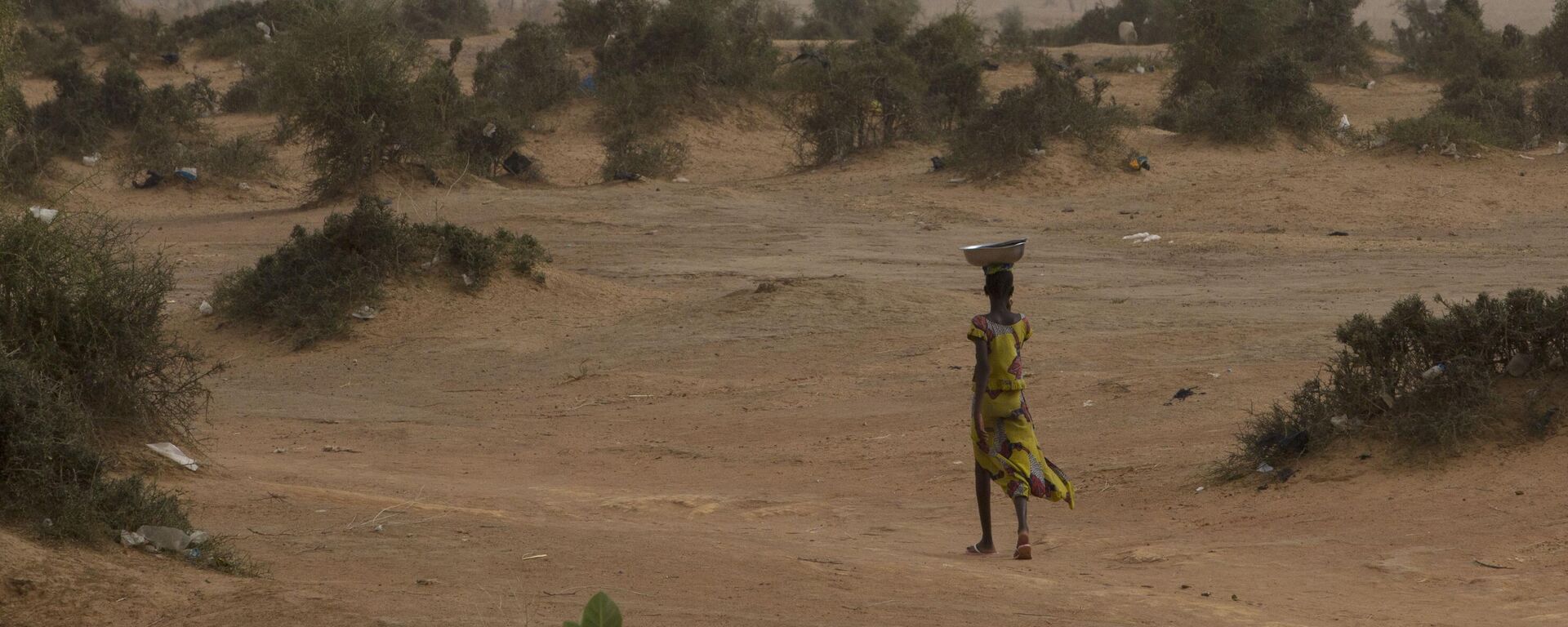https://en.sputniknews.africa/20231105/southern-hemisphere-is-drying-scientists-warn-1063335088.html
Southern Hemisphere is Drying, Scientists Warn
Southern Hemisphere is Drying, Scientists Warn
Sputnik Africa
The Earth's surface is 70% made up of water, however only about 1% of all water on the planet is fresh water available to humans, plants or terrestrial... 05.11.2023, Sputnik Africa
2023-11-05T16:49+0100
2023-11-05T16:49+0100
2023-11-05T16:49+0100
south america
antarctica
earth
climate
climate change
science
research
drought
https://cdn1.img.sputniknews.africa/img/07e6/0a/1a/1056636711_0:133:3070:1860_1920x0_80_0_0_e7b31adbaeec3bf4e63a035cbe5879ca.jpg
A new study shows that the Southern Hemisphere has dried more than the northern one in the last two decades (2001-2020), as explained in a research paper published in the magazine Science.The conclusions are based on satellite data and measurements of river and stream flows, which allowed the authors to model and calculate changes in water availability. Although the Southern Hemisphere only has a quarter of the global land area (excluding Antarctica), it appears to have a substantially larger effect on global water availability than the Northern Hemisphere.The analysis reveals a decline in water availability in South America, most of Africa and central and northwestern Australia.What Happens in the South Also Affects the North?South America has the Amazon rainforest, which is a key climate regulator, as well as a globally important habitat for species and home to many indigenous communities. The drying out of the rainforest would reduce vegetation and increase the risk of fires. According to the research, this would be bad news for humans and animals living in the rainforest, which have the potential to release billions of tonnes of carbon currently trapped in forest vegetation and soils.South America is also a major agricultural exporter of soybeans, sugar, meat, coffee and fruits to the world market. Changes in water availability will increase pressure on food systems around the world.The drought in most of Africa is also a real challenge. This huge continent has many climate zones and socioeconomic contrasts, with often limited resources to mitigate and adapt to them.The pressure on food system and habitats will create additional stresses across the continent, which is already suffering from inflation-related rises in global food prices and the Ukraine crisis.The nature and exact scale of changes and impacts are difficult to predict or model at local or regional scales, but this new document points to clear changes in complex climate patterns and processes in the Southern Hemisphere that will reduce water availability during El Niño events.Drought will place additional stress on ecosystems and species in key regions. It will also affect human populations with different adaptive capacities and, ultimately, global food systems. Although the Southern Hemisphere is mostly covered water, what happens there really matters across the planet.
https://en.sputniknews.africa/20230818/strong-international-cooperation-needed-to-combat-effects-of-climate-change-ethiopias-fm-says-1061428247.html
https://en.sputniknews.africa/20230308/1058907577.html
south america
antarctica
earth
Sputnik Africa
feedback@sputniknews.com
+74956456601
MIA „Rossiya Segodnya“
2023
Samantha Arias
https://cdn1.img.sputniknews.africa/img/07e7/0a/18/1063050346_115:0:834:719_100x100_80_0_0_1682778780537fd5aa8dd2536a012c1b.jpg
Samantha Arias
https://cdn1.img.sputniknews.africa/img/07e7/0a/18/1063050346_115:0:834:719_100x100_80_0_0_1682778780537fd5aa8dd2536a012c1b.jpg
News
en_EN
Sputnik Africa
feedback@sputniknews.com
+74956456601
MIA „Rossiya Segodnya“
Sputnik Africa
feedback@sputniknews.com
+74956456601
MIA „Rossiya Segodnya“
Samantha Arias
https://cdn1.img.sputniknews.africa/img/07e7/0a/18/1063050346_115:0:834:719_100x100_80_0_0_1682778780537fd5aa8dd2536a012c1b.jpg
south america, antarctica, earth, climate, climate change, science, research, drought
south america, antarctica, earth, climate, climate change, science, research, drought
Southern Hemisphere is Drying, Scientists Warn
Samantha Arias
Producer / Podcast host
The Earth's surface is 70% made up of water, however only about 1% of all water on the planet is fresh water available to humans, plants or terrestrial animals. In a world facing climate change, the global distribution of that 1% takes on a whole new importance.
A new study shows that the Southern Hemisphere has dried more than the northern one in the last two decades (2001-2020), as explained in a research paper published in the magazine Science.
The conclusions are based on satellite data and measurements of river and stream flows, which allowed the authors to model and calculate changes in water availability. Although the Southern Hemisphere only has a quarter of the global land area (excluding Antarctica), it appears to have a substantially larger effect on global water availability than the Northern Hemisphere.
The analysis reveals a decline in water availability in South America, most of
Africa and central and northwestern Australia.
What Happens in the South Also Affects the North?
South America has the Amazon rainforest, which is a key climate regulator, as well as a globally important habitat for species and home to many indigenous communities. The drying out of the rainforest would reduce vegetation and increase the risk of fires.
According to the research, this would be bad news for humans and animals living in the rainforest, which have the potential to release billions of tonnes of carbon currently trapped in forest vegetation and soils.
South America is also a major agricultural exporter of soybeans, sugar, meat, coffee and fruits to the world market. Changes in water availability will increase pressure on food systems around the world.
The drought in most of Africa is also a real challenge. This huge
continent has many climate zones and socioeconomic contrasts, with often limited resources to mitigate and adapt to them.
The pressure on food system and habitats will create additional stresses across the continent, which is already suffering from inflation-related rises in global food prices and the
Ukraine crisis.
The nature and exact scale of changes and impacts are difficult to predict or model at local or regional scales, but this new document points to clear changes in complex climate patterns and processes in the Southern Hemisphere that will reduce water availability during
El Niño events.
Drought will place additional stress on ecosystems and species in key regions. It will also affect human populations with different adaptive capacities and, ultimately, global food systems. Although the Southern Hemisphere is mostly covered water, what happens there really matters across the planet.




